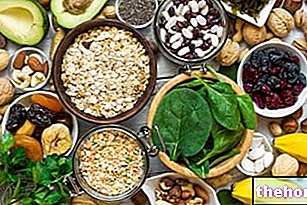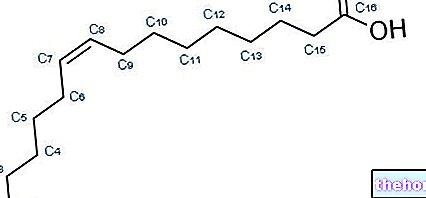Definition
The biological value (VB) is an evaluation parameter of the plastic proteins introduced into the organism with food. This index, which is expressed with a numerical value, refers to the quantity, quality and reciprocal ratio of the essential amino acids present in food peptides. Ultimately, the biological value is a nutritional aspect that describes the "protein quality and plastic potential of the amino acids contained in food".
Amino acids, essential and branched amino acids

Essential amino acids are molecules that the human body is NOT able to synthesize from scratch and which, among other functions, constitute the precursors of other NON ESSENTIAL amino acids; therefore, it is necessary to introduce them regularly with food.
As already stated, the content and the ratio between the essential amino acids determines the biological value of proteins and foods; therefore, in order to obtain a "balanced diet, it is essential to recognize them and respect the recommended daily intake:

Among the essential amino acids, some are distinguished by their high potential for neoglucogenesis (conversion into glucose to produce energy); this is the case of branched amino acids (BCAAs): VALINE, LEUCINE and ISOLEUCINA. They, in addition to contributing to the increase of the biological value of proteins, are particularly important in endurance sports (whose oxidative energy requirement increases significantly), in defied patients (liver and kidney diseases) and in patients on a strict diet (slimming diet therapy). The optimal ratio for the three BCAAs in the diet and supplements is 2: 1: 1 (two parts of leucine, one part of isoleucine and one part of valine).
Impact of biological value on metabolism
The impact of the biological protein value on the metabolism is calculated by evaluating the nitrogen [N] introduced with food or supplements, the one not absorbed (excreted in the faeces) and the one eliminated in the urine. Ultimately, it is possible to state that the biological value of food proteins can be estimated by relating the nitrogen retained to that absorbed:
V.B. = (N food - N faeces - N urine) / (N food - N urine)
Obviously, if it were so simple to calculate the biological value of proteins, the scientific community would not yet be engaged in evaluating the importance that it has in the food and supplementary field. In fact, there are other variables that affect the estimate of the biological value; from:
- Fecal metabolic nitrogen, resulting from: digestive enzymes, bile juices, mucous membranes of the digestive tract, catabolites and remains of the physiological bacterial flora
- Endogenous urinary nitrogen, resulting from the catabolism of tissue turnover
The biological value of food proteins is given by the similarity in the amino acid composition with respect to human proteins; it follows that polymers of animal origin (especially eggs and milk) have a higher biological value than bacterial ones or those of vegetable origin (medium or low VB). However, if it is true that this parameter takes into account the quantity, quality and ratio of the essential amino acids contained in the proteins of a food, it is equally true that MORE "foods with medium and low biological value can complement each other. In other words, it is not certain. that to reach the quota of essential amino acids it is NECESSARY to consume mainly proteins of animal origin, but it is possible (and in some cases advisable) to associate different proteins with medium or low biological value (cereals, legumes, vegetables, mushrooms, fruit ...) and obtain the same result. Obviously, it goes without saying that by associating foods characterized by proteins of medium and low biological value such as "legumes and cereals", the nutritional picture undergoes a significant variation; the nutritional modifications of the replacement of products of animal origin with those of vegetable origin are:
- Increased intake of carbohydrates
- Reduction in the intake of saturated fat and cholesterol
- Increased fiber intake
- Increased supply of polyunsaturated lipids
- Increased intake of other useful molecules such as lecithin
Association of cereals and legumes
To compensate for the lack of high biological value proteins, in some cases (as in veganism), it is advisable to resort to the frequent consumption of dishes deriving from the association of several foods, in particular cereals and legumes. Cereals are characterized by a low biological value given by the scarce presence of tryptophan and lysine (1.5-2.5%); this last essential amino acid is instead present to a greater extent in proteins with a medium biological value of legumes (4-5.5%); at the same time, legumes are deficient in METHIONINE and CISTEINE, however these are present to a large extent in cereals. High biological value proteins (eggs, milk, meat and fish products) contain percentages of lysine that are around 7% of the amino acid pool.
Estimate the biological value
To give a reference to the biological value of food proteins, it is first of all essential to check whether they are lacking in one or more amino acids, which in this case would be defined as "limiting amino acids"; secondly, it is necessary to estimate HOW MUCH the amino acid is limiting. This parameter, also called PROTEIN INDEX, is expressed as a percentage and refers to the nutritional requirements of each essential amino acid of the proteins in question; for example, a COMPLETE protein such as that of the " egg has a protein index of 100, because all the essential amino acids are present in the right portion, while a cereal polypeptide could have a protein index of 75 due to lysine deficiency, because the latter is present in quantities that reach only 75% Ultimately, it is possible to state that the protein index determines the biological value BUT its impact on the diet is as important as the portions of consumption; in fact, despite having a reduced protein index or biological value, a portion more or less abundant of only legumes (medium biological value) it is able to cover or almost the entire requirement of essential amino acids.




.jpg)























